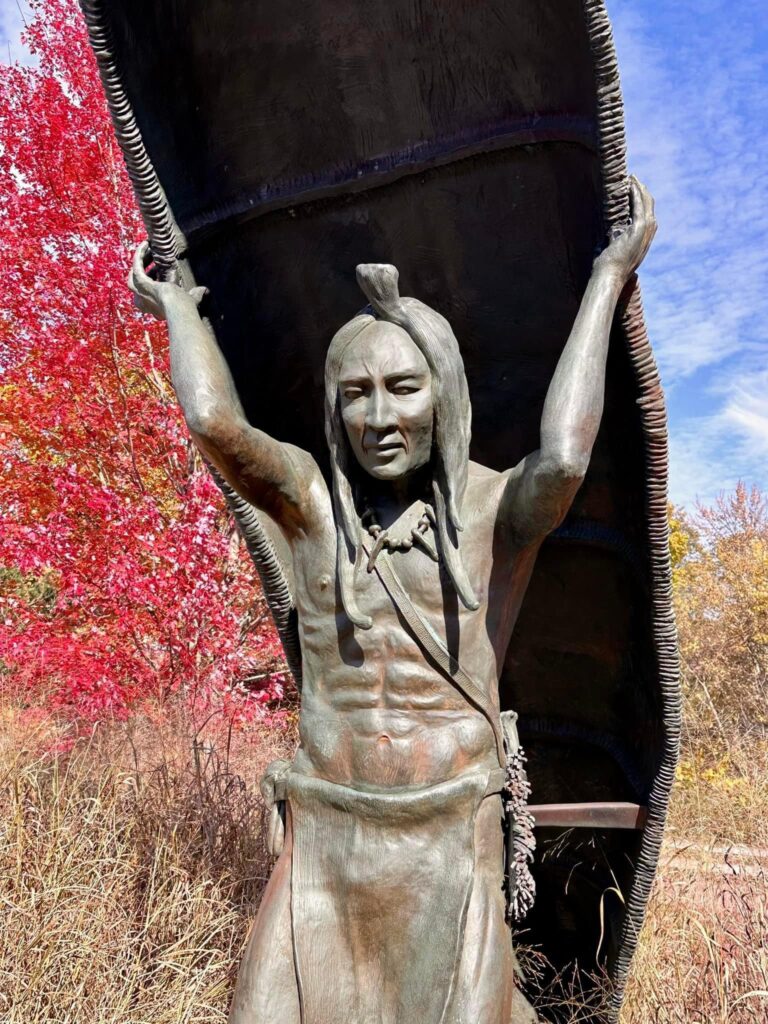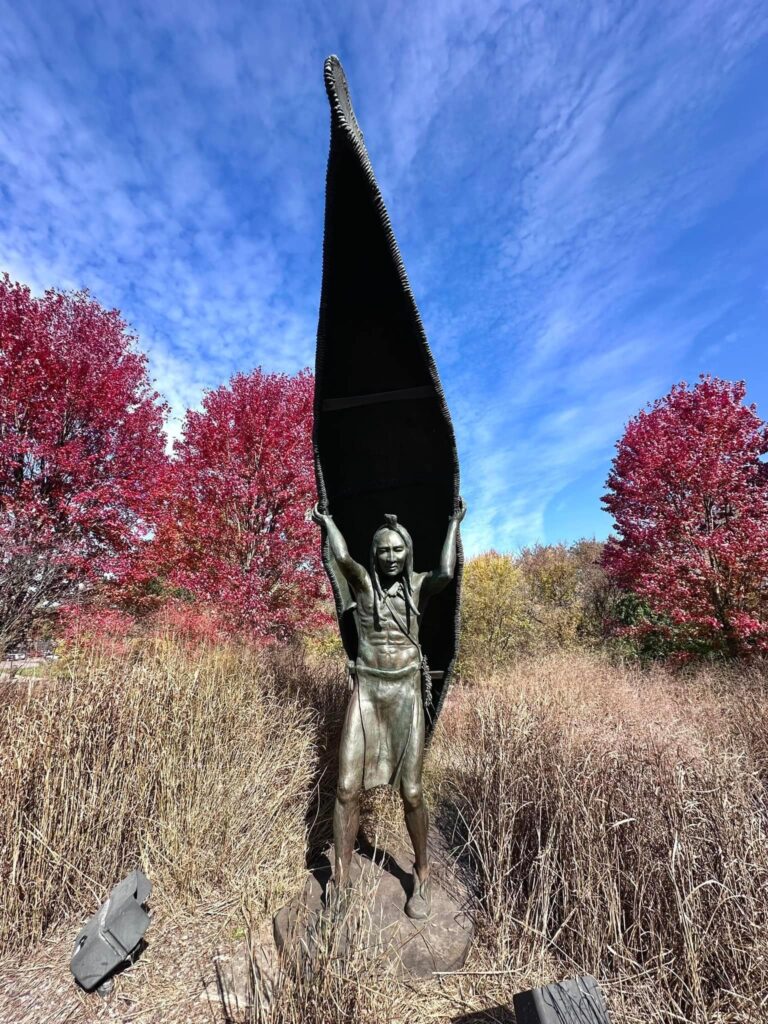Table of Contents
ToggleIntroduction to the Portage Path
The Portage Path in Akron, Ohio, is more than just a trail—it’s a link to the region’s rich Indigenous history. Marking an ancient route used by Native American communities, the path symbolizes resilience, adaptability, and the ingenuity of early civilizations. At its northern end stands a striking Native American statue, a tribute to the path’s profound cultural significance.
What is the Portage Path?
The Portage Path was a critical trail connecting the Cuyahoga and Tuscarawas rivers. Indigenous peoples used this route to transport canoes and goods overland between the two waterways. The term “portage” refers to the act of carrying watercraft and supplies between navigable waters—a practice essential in overcoming obstacles like divides between rivers or impassable stretches of water.
This nine-mile trail not only facilitated travel but also served as a vital trade and communication link between the Great Lakes and the Ohio River systems. It enabled access to resources, fostered cultural exchanges, and contributed to the interconnectedness of Native American tribes across the region.
The Statue: A Monument of Heritage
Standing at the northern end of the trail, the Native American statue is more than a work of art. It is a powerful reminder of the people who shaped the land long before modern settlements. With a commanding presence, the statue portrays strength and reverence, inviting visitors to reflect on the legacy of the Indigenous cultures that once thrived in the area.

Summit Metro Parks: Preserving History
The trail today is preserved and maintained by Summit Metro Parks. Informational markers along the path provide historical context, sharing stories of how the Indigenous peoples utilized the area. Visitors can walk the path to experience firsthand the landscapes traversed by those who came before.
Preservation efforts not only honor the past but also educate future generations about the importance of these routes. The Portage Path has become a cultural landmark, ensuring that its historical value remains intact.
Why the Portage Path Matters Today
1. A Window into Native American Culture
The Portage Path offers an opportunity to learn about and celebrate the rich traditions, skills, and survival strategies of Native communities. It emphasizes the connection between people and the environment, showing how early inhabitants adapted to and thrived in the natural world.
2. A Connection to Local and National History
This trail is a tangible link to the broader history of the United States, including the exploration and settlement of the Midwest. Its location at the crossroads of two major river systems made it a strategic and cultural hub.
3. A Reminder of Shared Stewardship
By preserving this historic path, Summit Metro Parks demonstrates the importance of shared responsibility in maintaining cultural landmarks. It encourages modern communities to respect and protect the stories embedded in the land.

Visiting the Portage Path
For those interested in history, culture, or outdoor exploration, a visit to the Portage Path is a must. The trail offers not only a chance to connect with nature but also to walk in the footsteps of those who used this route centuries ago. The statue at its northern end is a fitting start or end point, offering a space for reflection and appreciation.
Conclusion
The Portage Path in Akron is more than a trail—it’s a bridge between the past and present. Through its preservation, we honor the Native American communities whose ingenuity and resilience carved this path into history. The statue at the northern terminus stands as a testament to their legacy, inviting all who visit to remember and respect the stories of those who came before.
